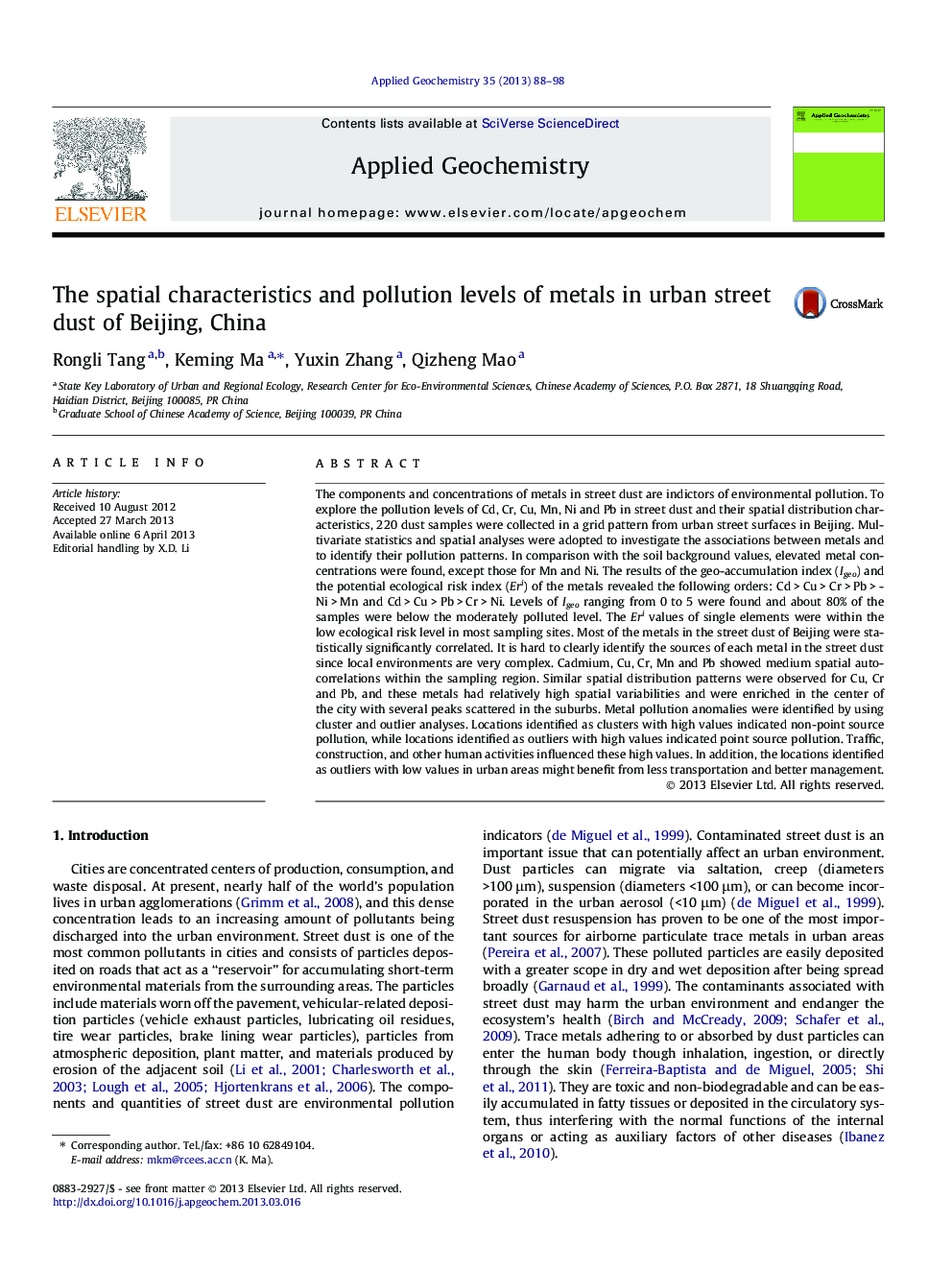| Article ID | Journal | Published Year | Pages | File Type |
|---|---|---|---|---|
| 6335338 | Applied Geochemistry | 2013 | 11 Pages |
Abstract
The components and concentrations of metals in street dust are indictors of environmental pollution. To explore the pollution levels of Cd, Cr, Cu, Mn, Ni and Pb in street dust and their spatial distribution characteristics, 220 dust samples were collected in a grid pattern from urban street surfaces in Beijing. Multivariate statistics and spatial analyses were adopted to investigate the associations between metals and to identify their pollution patterns. In comparison with the soil background values, elevated metal concentrations were found, except those for Mn and Ni. The results of the geo-accumulation index (Igeo) and the potential ecological risk index (Eri) of the metals revealed the following orders: Cd > Cu > Cr > Pb > Ni > Mn and Cd > Cu > Pb > Cr > Ni. Levels of Igeo ranging from 0 to 5 were found and about 80% of the samples were below the moderately polluted level. The Eri values of single elements were within the low ecological risk level in most sampling sites. Most of the metals in the street dust of Beijing were statistically significantly correlated. It is hard to clearly identify the sources of each metal in the street dust since local environments are very complex. Cadmium, Cu, Cr, Mn and Pb showed medium spatial autocorrelations within the sampling region. Similar spatial distribution patterns were observed for Cu, Cr and Pb, and these metals had relatively high spatial variabilities and were enriched in the center of the city with several peaks scattered in the suburbs. Metal pollution anomalies were identified by using cluster and outlier analyses. Locations identified as clusters with high values indicated non-point source pollution, while locations identified as outliers with high values indicated point source pollution. Traffic, construction, and other human activities influenced these high values. In addition, the locations identified as outliers with low values in urban areas might benefit from less transportation and better management.
Related Topics
Physical Sciences and Engineering
Earth and Planetary Sciences
Geochemistry and Petrology
Authors
Rongli Tang, Keming Ma, Yuxin Zhang, Qizheng Mao,
